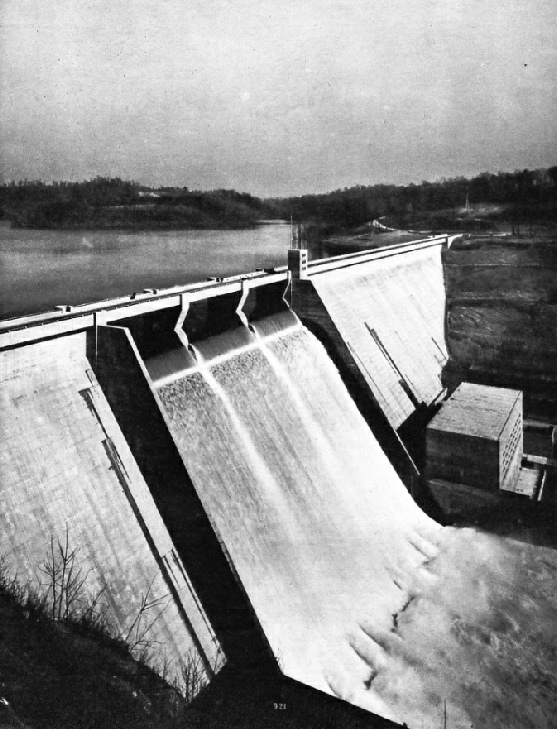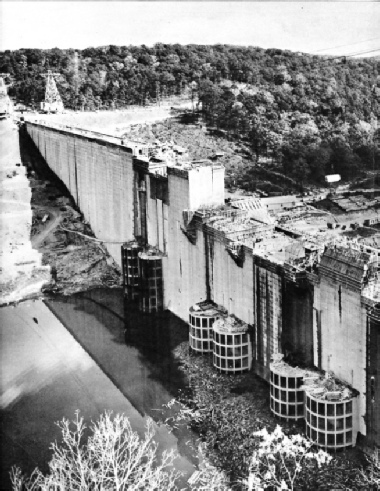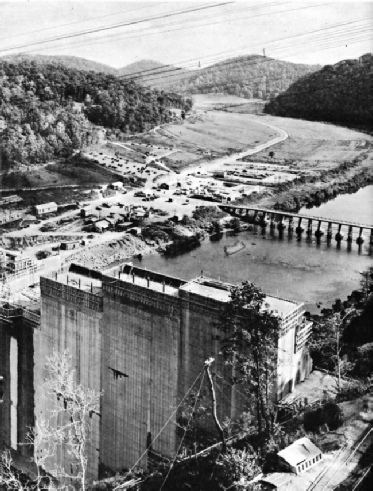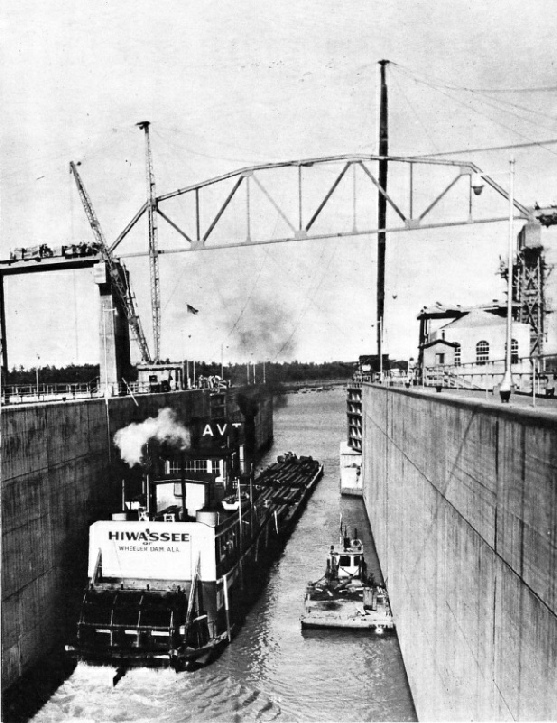

© Wonders of World Engineering 2014-




Part 32
Part 32 of Wonders of World Engineering was published on Tuesday 5th October 1937, price 7d.
Part 32 includes a photogravure supplement showing various aspects of the Tennessee Valley scheme in the course of construction. This section illustrates the article on the Control of the Tennessee River.
The Cover
This week’s cover is an impressive view of a navigation lock at Guntersville Dam, Alabama, which is part of the United States Government’s colossal scheme for promoting economic recovery in the Tennessee Valley. Guntersville Dam is one of a series of dams designed to make the Tennessee River navigable in all conditions over the 650 miles between Knoxville (Tennessee) and Paducah (Kentucky).
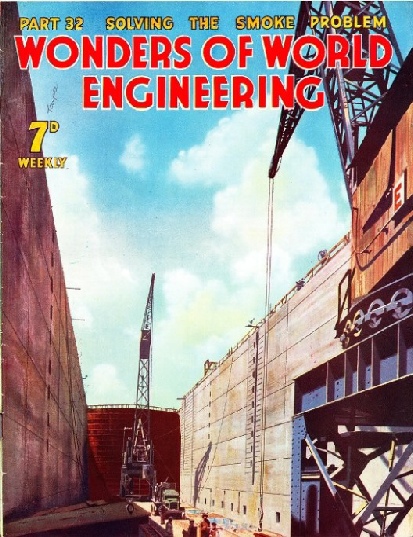
Contents of Part 32
Diamonds and the Engineer (Part 2)
The remarkable ways in which diamonds are used in engineering. The article is concluded from part 31.
Solving the Smoke Problem
Engineers and chemists are now closely co-operating to solve smoke and waste gas problems arising from the growth of power supply on a large scale. The main object is to lessen the damage caused by the emission of grit, dust, tar and harmful acids. One of the problems which have arisen from the building of giant power stations, in Great Britain particularly, is the problem of fighting the smoke menace. This chapter describes a remarkable new process which not only removes injurious matter from flue gases before they are discharged into the atmosphere, but also converts the sulphurous products into sulphur.
The Tennessee Valley Authority
A vast engineering project involving the expenditure of more than £75,000,000 has been devised to regulate the flow of the Tennessee River and to combat erosion of the surrounding land. Whatever political opinions one may have, it is impossible to view with anything hut admiration the vast schemes that President Roosevelt has recently put into operation to promote economic recovery in the USA. A special Act of Congress in May 1933 created what is known as the Tennessee Valley Authority, popularly known by its initials TVA. The task of this body is to regulate the Tennessee River, which flows for 800 miles before it joins the Ohio. The objects of this control are many. They include the use of water power for generating electricity, which is to be introduced on a regional system for use in homes and in factories. They include the development of river navigation. In addition, by checking erosion, TVA will produce radical changes in the variety and yield of agricultural produce in the Tennessee Valley.
Control of the Tennessee River
(photogravure supplement)
Control of the Tennessee River:
Photogravure Supplement - 2
THE UPSTREAM FACE OF NORRIS DAM, seen from the top of the mixing plant on the west abutment during the building of the dam. The semicircular structures at the base are “trash-racks” or filters covering the openings through the dam. The masonry section of Norris Dam is 1,570 feet long; the dam is situated on the Clinch River, an important tributary of the Tennessee River.
Control of the Tennessee River
Photogravure Supplement
AFTER THE OHIO-MISSISSIPPI FLOODS of 1937, Norris Dam during the overflow period after the storage of flood water. Norris Dam is 265 feet high and 204 feet thick at the base of the spillway section. At the crest of the spillway are three hydraulically-operated gates, each 100 feet long.
Contents of Part 32 (continued)
Tramway Cars and Trolley Buses
More than a thousand million passengers are carried by tramway cars in one year in London alone. The trolley bus is replacing the tramway car in many places, but the two systems of transport are of great importance in most cities and towns. Electric traction is a subject of absorbing interest. The first electric tramway in Great Britain was installed in Leeds in 1891. Since that time tramway cars have appeared in almost every large town. During the year 1934-35 more than a thousand million passengers were carried in electric tramway cars in London. In many places, however, this form of transport is being superseded by the trolley-bus. The first rails for tramway cars in Great Britain were laid at Birkenhead as long ago as 1860. At that time, however, the cars were drawn by horses. It happened that a few months ago Birkenhead withdrew its electric tramway services.
Story of the Cinematograph - 1 (Part 1)
One of the largest industries in the world had developed from the invention of a scientific toy. The cinema camera, in addition to its entertainment value, is of incalculable service to the engineer and the scientist. This chapter is concluded in part 33. It is the second article in the series Invention and Development.
The second part of the Story of the Cinematograph appears in part 35.
